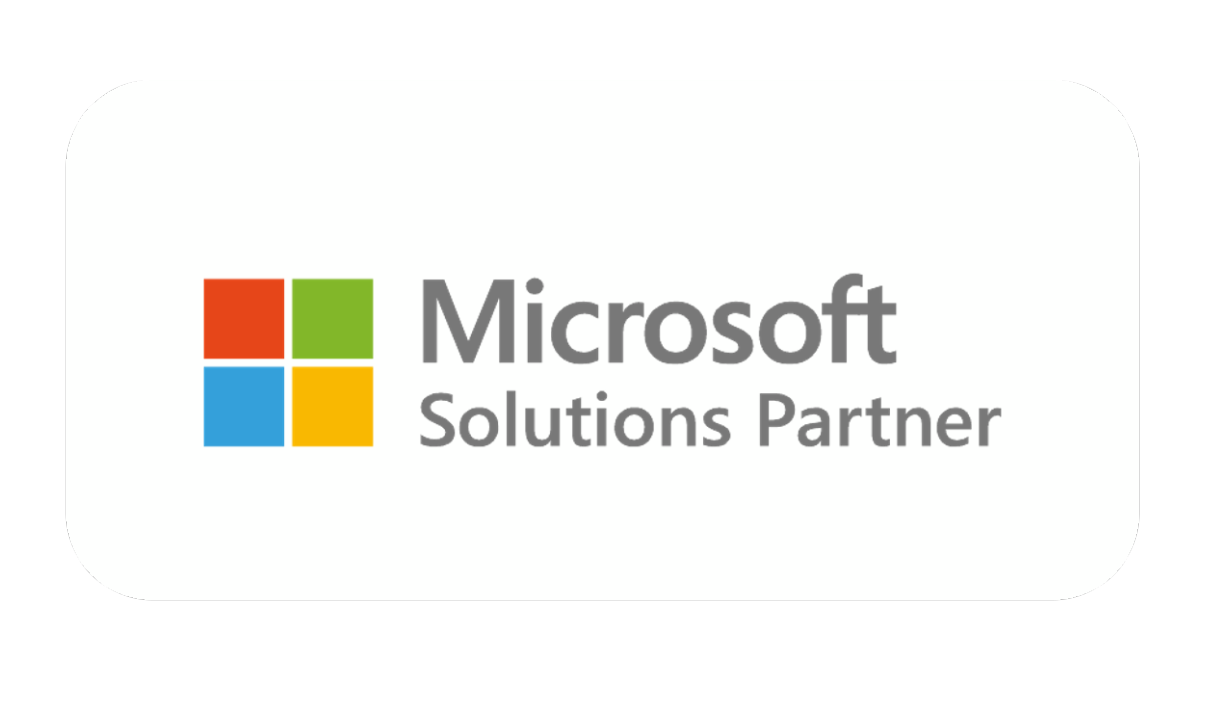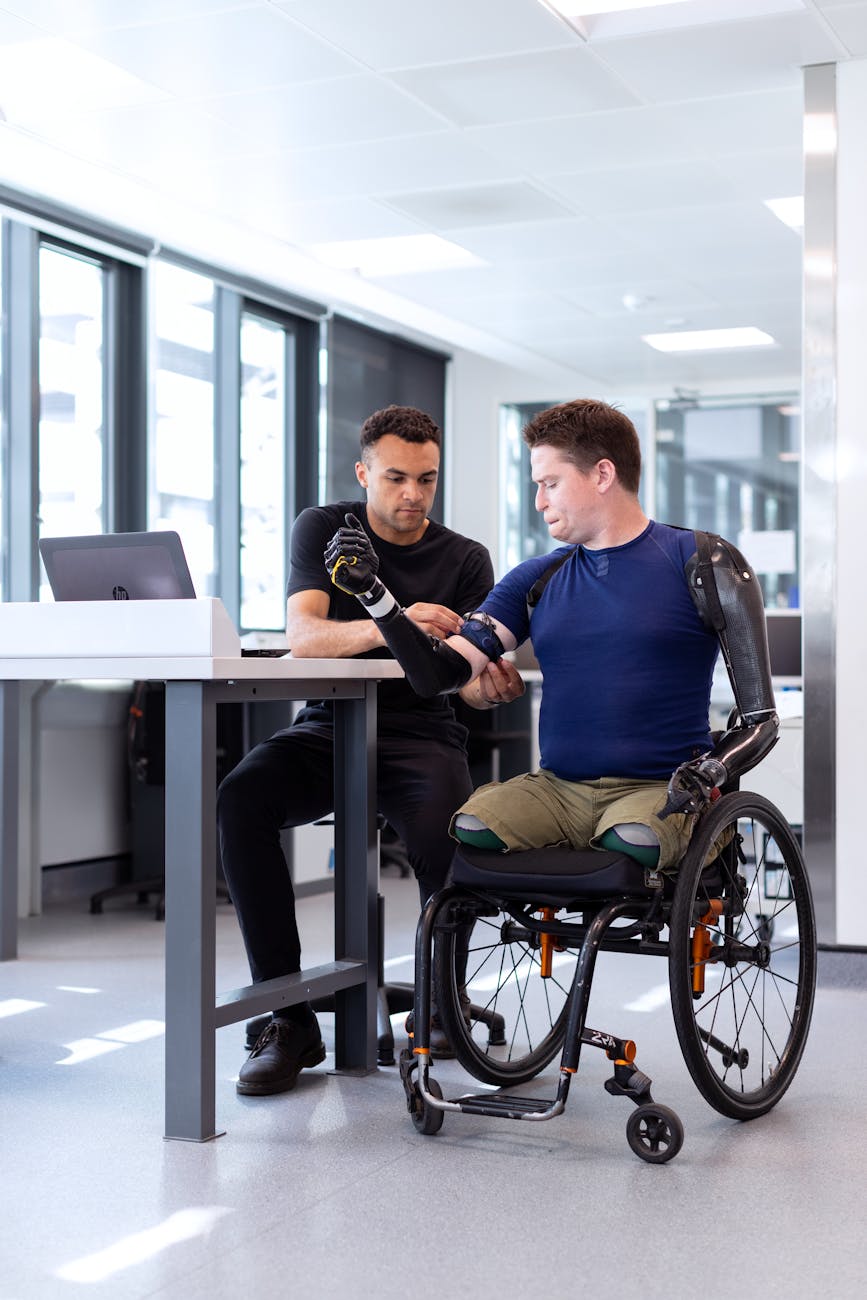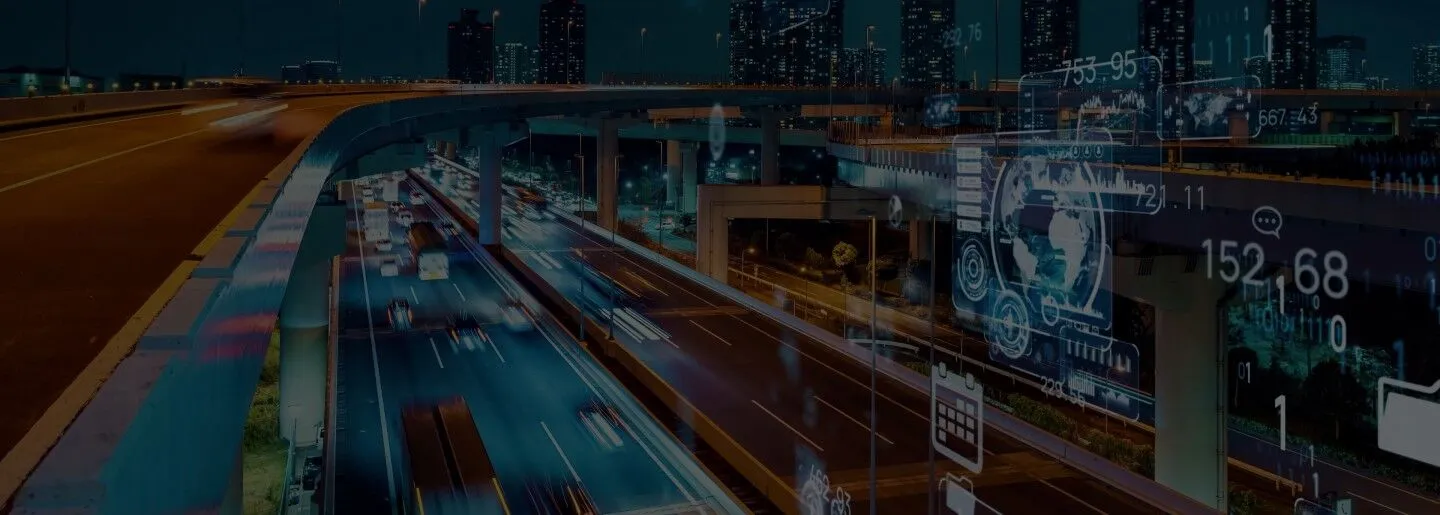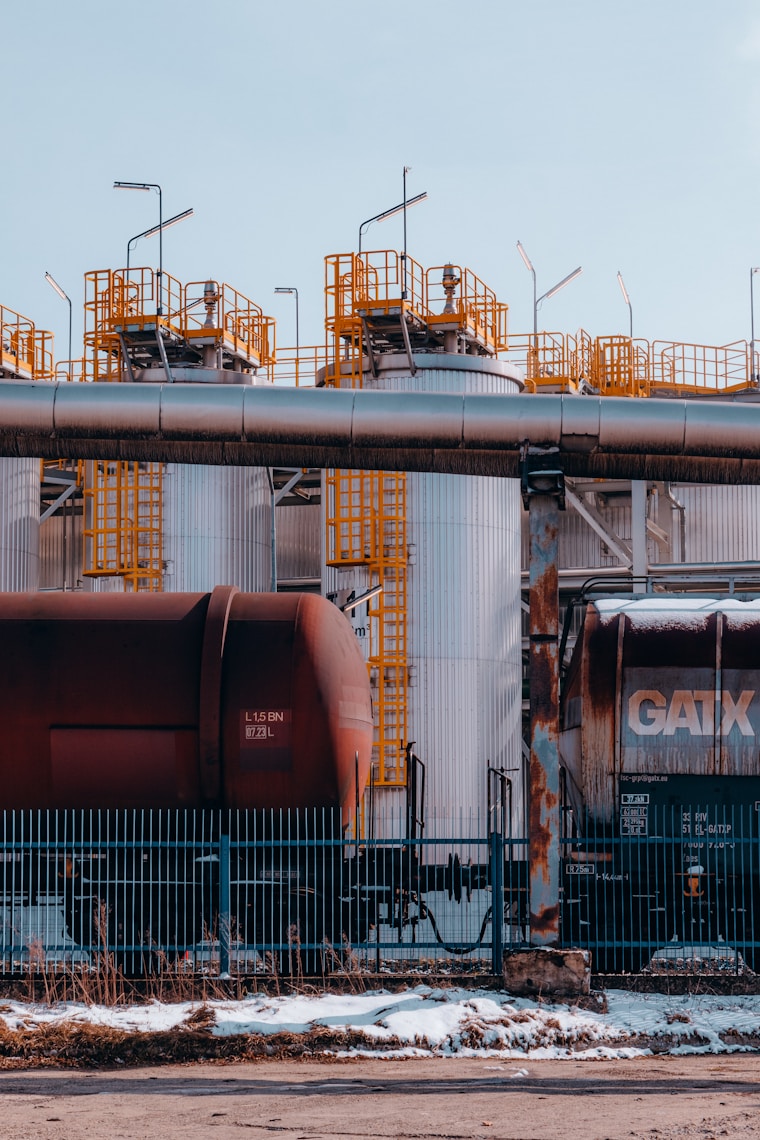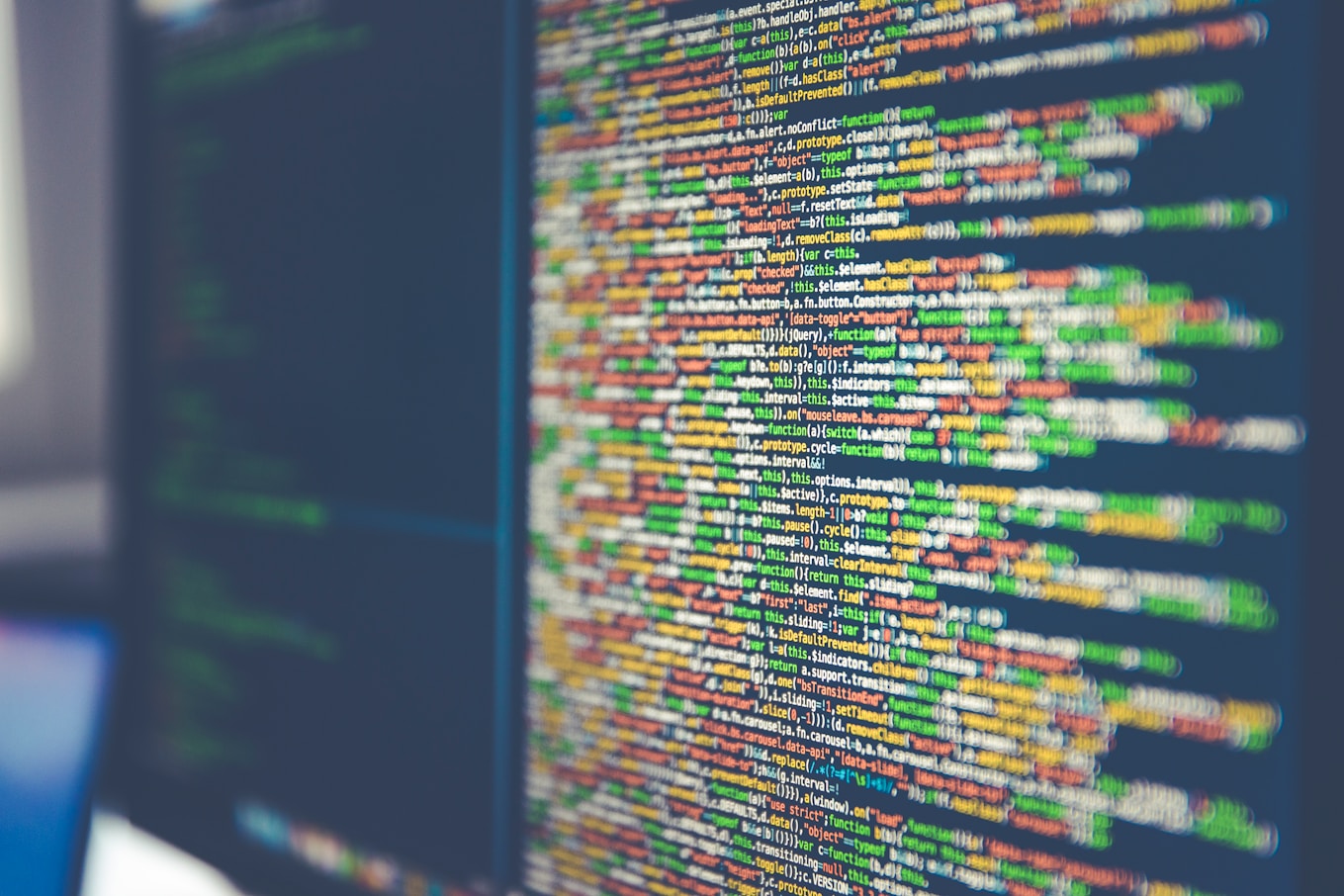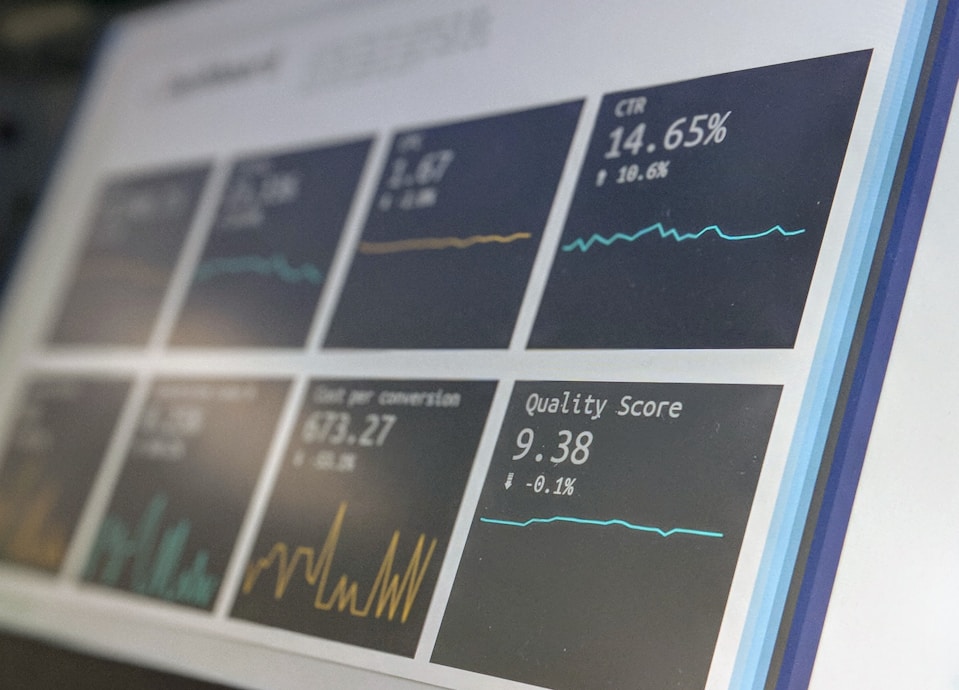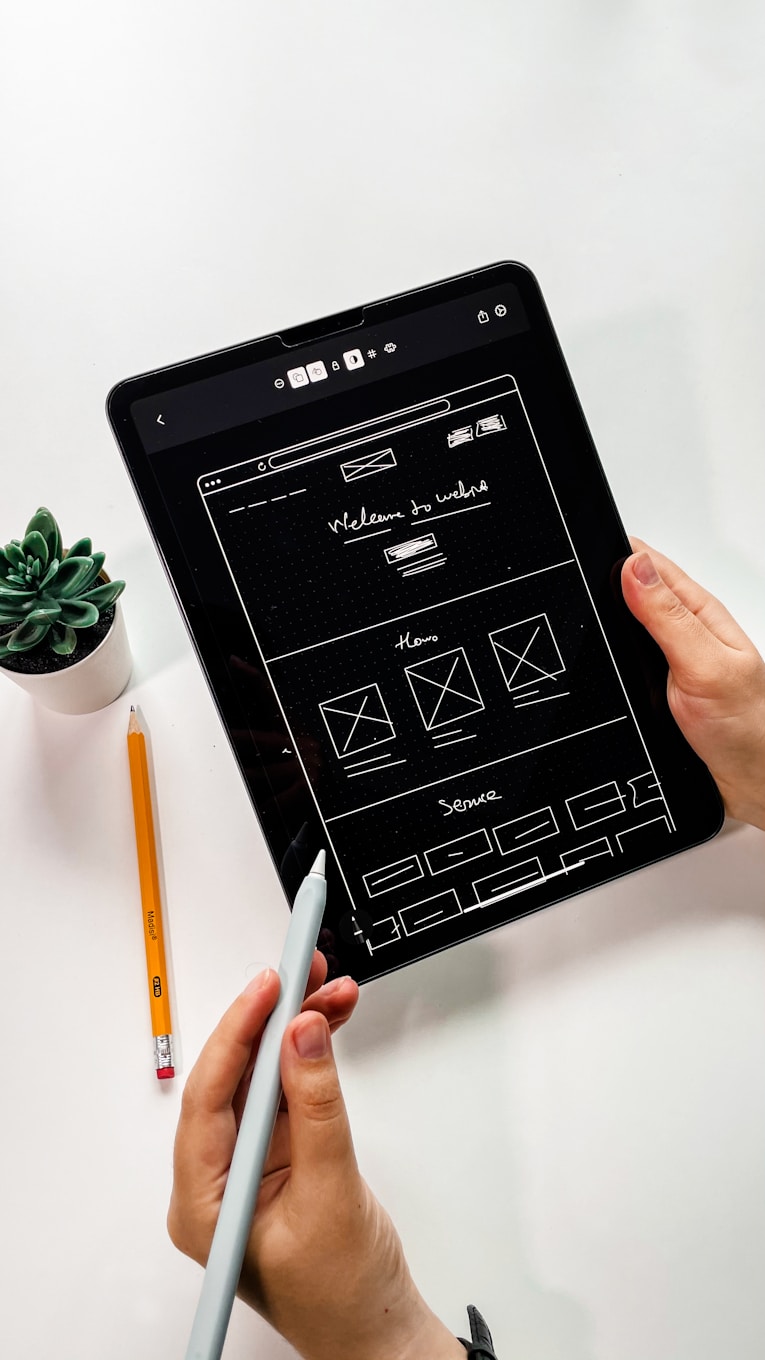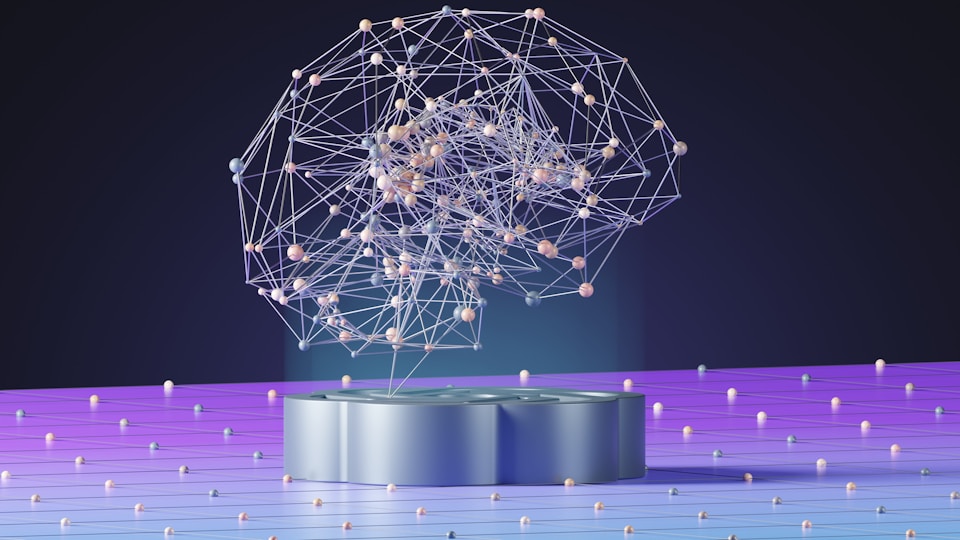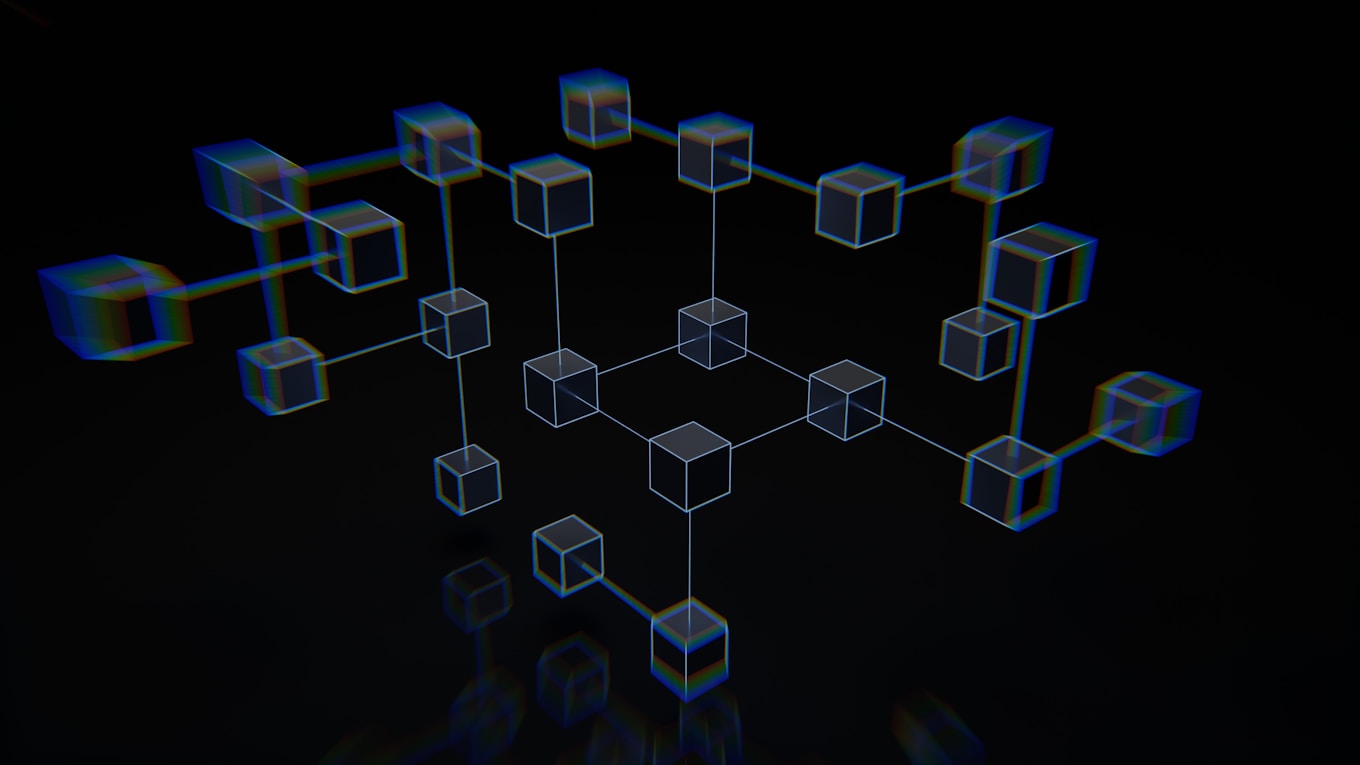The transportation and logistics sector is always filled with a multitude of simultaneously moving parts. Orders get placed, inventory levels require constant monitoring, delivery trucks face delays, products get returned, and so on. With so much going on and each step of operations relying on the previous one, it’s easy for a seemingly small issue to cause a ripple effect and significantly hinder efficiency.
That’s why, in recent years, logistics and transportation companies have been looking at emerging technologies to help optimize their processes. One such innovation that has had a particularly positive impact on the sector is the Internet of Things (IoT). As you may know, the term refers to the implementation of smart devices that facilitate a constant data transfer between physical objects and software that runs speedy analytics.
The popularity of this technology continues to grow so much that the global IoT in logistics market is expected to reach $1520.12 billion by 2029, growing at a CAGR of 24.7%.
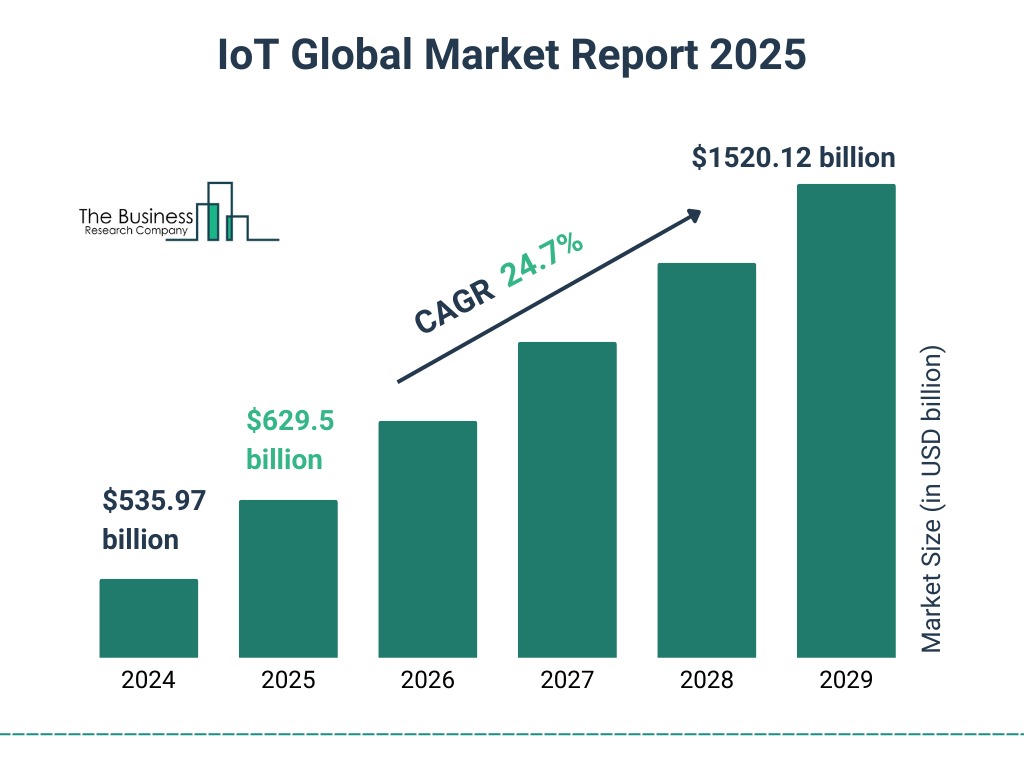
However, if you haven’t yet embraced IoT and are just considering it, you might be curious about the benefits it can deliver to your business. In that case, you’ve come to the right place because in today’s post, we’ll discuss the advantages, challenges, top use cases, and trends of IoT in transportation and logistics. Let’s take a look at:
- Core Pros of IoT Apps in Transportation and Logistics
- Key Pitfalls to Keep in Mind
- 10 Use Cases of IoT Solutions in Transportation and Logistics
- Top Trends to Watch for
Benefits of IoT Applications in Transportation and Logistics
Of course, company leaders are primarily interested in the advantages they may observe following the implementation of a particular technology. So, let’s first cover the main benefits of incorporating IoT in the transportation business.
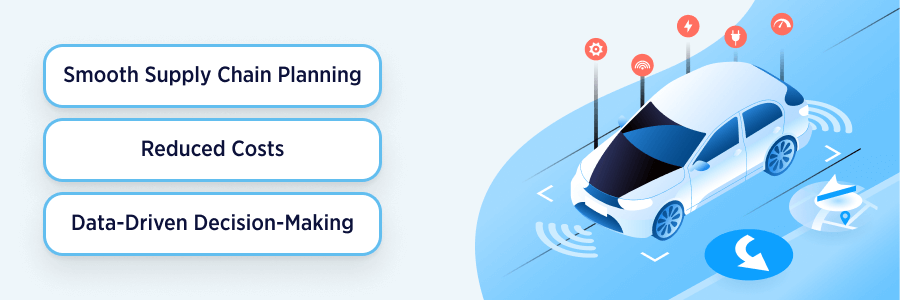
Smooth Supply Chain Planning
As we’ve already mentioned, IoT-powered tools allow companies to acquire information about far-removed physical objects and base decisions on accurate, real-time data. Considering that the supply chain is often managed from afar, this capability can truly come in handy.
By providing timely information on delivery routes, inventory levels, machinery safety, and so on, IoT solutions can simplify supply chain planning activities. Primarily because they help anticipate issues and thus avoid major disruptions.
Reduced Costs
As a consequence of fewer transportation or logistical challenges, costs will naturally decrease following the implementation of IoT tools. Think about it, if you manage to optimize routes in a way that reduces empty miles or minimizes product spoilage by controlling conditions under which it is transported, there will be fewer expenses on your books.
Since the IOT can do all of those things in the transportation sector, it is a technology many business leaders are eager to integrate into their IT infrastructure.
Learn how tailored IT infrastructure services support effective IoT deployments in logistics.
Data-Driven Decision-Making
Finally, a major benefit of IoT for logistics organizations is that it empowers them with insights they otherwise wouldn’t have had seamless access to. This, in turn, enables truly data-driven decision-making.
For example, with the help of IoT devices, your delivery staff will immediately know if there is a traffic issue with a route they were planning to take. Moreover, the software might even suggest other route options and the corresponding arrival times. That way, drivers will be able to make a decision on how to proceed by having all the relevant information on hand.
Challenges of IoT in Transportation and Logistics
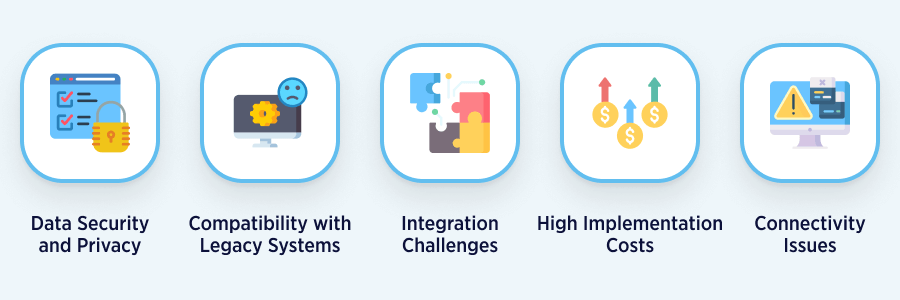
The Internet of Things in logistics can open up plenty of opportunities for businesses. However, to make the most of it, you should be aware of possible pitfalls before implementation. Here are the core challenges to keep in mind:
Data Security and Privacy
IoT-powered devices constantly communicate to gather different data, part of which is often sensitive and private. Now, picture what can happen if some of these devices are vulnerable to security breaches. Most likely, the company will lose trustworthiness among customers and may face heavy fines. Indeed, not a good scenario.
Given that you rely on a wide range of devices like sensors, trackers, and drones to collect valuable data, ensuring consistent protection across the entire network can be a tough nut to crack. To reduce the risk of cyber threats, you may consider employing a blockchain-based intrusion detection system, strong authentication and access control, end-to-end encryption, and the like.
Compatibility with Legacy Systems
Another challenge you might face is trying to integrate IoT with your legacy systems. That’s mostly because older systems are not always compatible with newer technologies. That is to say, you may end up with ongoing integration challenges and require additional middleware or system upgrades, which can take up both time and budget.
Check our complete guide on Legacy System Modernization Steps
High Implementation Costs
If you choose to employ robust security measures or update your legacy systems to ensure smooth and secure IoT implementation, you can probably guess that it’s not going to be a cheap pleasure.
Besides, you might require new hardware and software, and your staff may need training to utilize IoT technologies. So, while, as we’ve mentioned earlier, the transportation services market can cut plenty of costs thanks to IoT, the initial investment may eat into your budget.
Connectivity Issues
What IoT devices primarily need to operate? A reliable and strong network. Otherwise, they can’t connect with each other and exchange data. You might say that in the age of 5G, connectivity isn’t a problem.
While that’s true, if your inventory is placed in some remote areas with limited network coverage, this will make communication between systems complicated.
Integration Complexity
By its very nature, the logistics sector relies on communication between different stakeholders such as manufacturers, suppliers, retailers, distributors, and transportation providers. Obviously, all of them operate on different systems, which can cause issues during data exchange.
On top of that, many enterprises utilize IoT technologies to gain real-time data on various business operations. However, since different systems store data in different formats, it’s crucial to standardize them before analytics. Yet, achieving it is not a walk in the park.
Check our Complete Guide to the Data Transformation Process
Top IoT in Transportation and Logistics Use Cases
Now, let’s dive into the specifics and look over the main IoT use cases in the transportation industry. Here, we’ve chosen to focus on the ten that are most impactful, but the truth is we’re only on the precipice of all that this technology is going to do.
Route Optimization
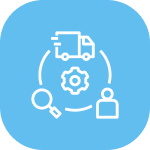
One of the most exciting examples of IoT in transportation is its use for route optimization. By combining real-time traffic data with information on various restrictions and carrying out analytics swiftly, IoT-powered tools can suggest optimal routes that reduce excess miles.
Discover the 6 Types of Data Analysis for Business
An excellent example of this use case comes from the world-renowned UPS. The company has been investing heavily in its dynamic routing technology and has announced that it now saves the company 2-4 miles per driver. Considering UPS’s wide-spanning network, these numbers are quite significant and translate positively onto the bottom line.
Driving Behaviour Monitoring

The Internet of Things doesn’t stop at solely optimizing routes. It can monitor driving behavior. For example, you may utilize telematics solutions or GPS tracking devices to collect crucial data like seatbelt usage, over-speeding, and idle time to assess driver performance.
Overall, this improves fleet operations by ensuring that drivers don’t misuse vehicles, follow safe and efficient routes, and stay aligned with company policies.
Inventory Management
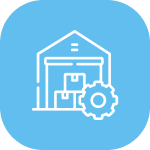
Another major use case of IoT sensors in transportation relates to inventory management. Here, intelligent devices are installed within the warehouse or concrete containers to continuously monitor inventory levels. Thus, eliminating the need for manual checks and allowing your software to automatically create new orders whenever stock is running low.
RFID (radio frequency identification) tags are also gaining popularity in this sphere. Their role is in sharing location data of particular packages or pallets through the cloud. That way, whenever a container is unloaded, the RFID updates the inventory automatically. So, your employees don’t have to scan every item themselves.
Additionally, when coupled with artificial intelligence or machine learning algorithms, IoT devices can also study inventory-related patterns and forecast overstocks and understocks. If your company works closely with retailers, this can be particularly interesting for them.
Take a look at how we built a Warehouse Management App for Inventory Tracking
Predictive Maintenance
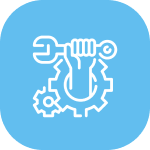
Another use case worth mentioning in this roundup is predictive maintenance. This IoT capability is most often leveraged by manufacturing companies but can actually be useful for transport organizations, too.
Here, by installing smart devices into warehouse machinery or even car tires, faults and defects can be identified before any major disruption occurs. This is accomplished thanks to the constant real-time data collection, which the system can then analyze to identify patterns that foreshadow issues.
Once the algorithm suspects a malfunction is just around the corner, it will suggest maintenance action that can prevent the equipment from being out of service for too long. As you can imagine, this can result in substantial cost savings.
Condition Control

Often, logistics companies are in charge of transporting products that are highly temperature- or humidity-sensitive. As such, monitoring the conditions under which they are delivered is of utmost importance.
Unsurprisingly, this is where the integration of IoT devices into transportation vehicles can help. Similar to the other use cases, IoT devices continuously transfer relevant information while products are in transit.
Then, whenever subpar conditions are detected, the system can automatically adjust the temperature and other elements or alert the relevant personnel so that they can take care of it.
Read on to discover how we developed a Cold Chain Monitoring System
Theft Detection

Security is important in any line of work, and logistics is no exception. Ensuring warehouse and shipment safety is a top priority for organizations, and that’s why many are turning to connected devices for help.
IoT technologies can help prevent theft, fraud, damage, and other types of losses by detecting trespassers through connected CCTV cameras, alerting management about unauthorized container opening, and the like. Moreover, these applications can quickly block facility doors whenever a threat is suspected.
End-to-End Product Tracing

One of the key tasks of a transportation firm is ensuring that the products are on the right trucks and heading to the correct warehouse or end destination. Thus, keeping track of the goods and everything that’s going on can be very time-consuming and sensitive to even a minor error.
In this regard, RFID tags or AIDC sensors come into play once again as they wirelessly transfer information on a product’s location and where it’s meant to be heading. Naturally, this helps ensure that the entire supply chain process is under control and increases client trust in the organization.
Discover how we developed Advanced Shipment and Container Tracking Software
Automated Toll and Ticketing

Depending on the highway you take to transport your goods, you often have to pay certain fees. The need to buy a ticket leads to long queues at toll booths. So, while your deliveries are in transport, you waste both time and fuel. Fortunately, innovations like IoT have made it possible to automate this process.
In particular, regarding RFID tags, microcontrollers, and load cells, you can pay for tolls automatically and get a unique tag proving payment registration at the RTO. With this tag in place, your drivers can just pass the queries effortlessly.
Employee Safety

Working at a warehouse can sometimes pose a little danger, with all the heavy manual work and constantly moving equipment around. As such, business leaders are often increasingly concerned about ensuring their employees stay safe.
Here, IoT can once again come to the rescue in the form of wearable devices that assess staff fatigue, heart rate, and can even detect a fall. Once an issue is detected, the system quickly alerts the on-call manager so that they can ensure the employee takes a break or even call an ambulance. Moreover, this system is smart enough that it can even call an ambulance.
Find out more Use Cases of IoT Wearables
Environmental Sustainability
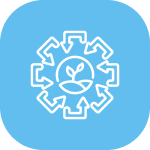
Applications of IoT in logistics can not only take care of your staff but also the environment. Thus, noticeably elevating sustainability efforts. The Internet of Things helps to cut on wastage, offers route optimization, and reduces fuel consumption, therefore minimizing emissions and cutting costs.
Moreover, IoT applications in transportation, when powered with CO₂ trackers, can measure emission levels during driving, leading to relevant adjustments that support better sustainability.
Emerging Trends in IoT-Driven Transportation
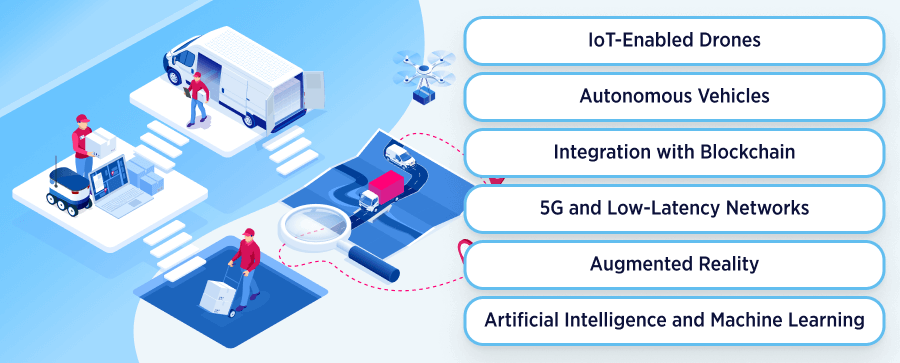
Given the ground we discussed today, you can imagine the crucial role of IoT in shipping and logistics. This innovation has opened up plenty of opportunities for the transportation industry and doesn’t stop resting on its laurels. All of this, of course, becomes possible thanks to close collaboration with other emerging technologies. Below, you’ll find a short recap of the core trends in this niche that are worth keeping an eye on:
1. IoT-Enabled Drones
When integrated with IoT, drones become an invaluable tool for transportation businesses. For example, they can provide real-time data while goods are in transport, helping to optimize routes and minimize shipment delays.
2. Autonomous Vehicles
Self-driving cars are gaining more and more popularity. Powered by sensors, machine learning algorithms, and IoT technologies, autonomous vehicles (AVs) may improve and optimize transportation systems, making the entire process both safe and efficient. Plus, AVs are eco-friendly.
3. Integration with Blockchain
IoT devices exchange vast amounts of data, and to double down on security, many enterprises are actively leveraging blockchain technologies. Plus, by integrating this innovation into IoT, you may simplify cross-border shipments.
4. 5G and Low-Latency Networks
How long are you willing to wait to access your data and make decisions? Probably not long at all. That is to say, if you want to gain real-time insights, 5G and low-latency networks are your go-to.
5. Augmented Reality
Decades ago, hardly anyone believed it was possible to have a virtual map on a car display showing all the routes, obstacles, and vehicles on the road. However, today, it’s a reality thanks to technologies like AR. It helps promptly detect potential issues, leading to safer driving and faster deliveries.
6. Artificial Intelligence and Machine Learning
Today, we’ve talked a couple of times about predictive maintenance, route optimization, autonomous vehicles, and more. All of these are crucial components that have redefined the way we approach logistics and transportation.
And these changes would hardly be possible without the implementation of ML and AI. This innovation has already provided numerous benefits to the industry, and there is still a lot to come.
Learn more on how AI Shapes the Transportation
Start Your IoT Implementation Journey
As you can see, the Internet of Things has ample benefits to deliver for the transportation and logistics sector. From route optimization and inventory management to employee safety — there are many use cases of this technology that your company can leverage for better operations.
However, we understand it can be difficult to know where to get started. Our team has spent years delivering various IoT-powered solutions to organizations across industries, and we’d be happy to contribute our expertise to your next project.
So, if you’re looking to get started with IoT, don’t hesitate to reach out to Velvetech. We have worked on numerous successful logistics and transportation software projects and would be thrilled to dive into a new one.




